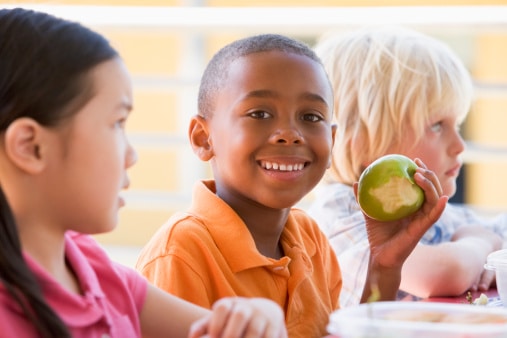In preparation for the 2021-2022 school year, school lunches continue to be an important way to provide adequate nutrition to support the development and health of children and youth.
Here are a couple of items to consider. The guidelines are the same as in previous school years.
1. For a guide on what to pack, Canada’s Food Guide is a great reference. Meals can be balanced in many different ways. For optimal nutrition, recommendations are to include whole grains, proteins and vegetables and fruit. Aim to pack all food groups for a meal and at least 2 for snacks. Because the typical school day is 6-7 hours, we suggest you plan for one meal and two snacks.
2. Pack enough water, and other beverages, to keep your child hydrated throughout the day.
This year, each student will be required to bring their own drink bottle that is labeled and kept with them during the day. This should not be shared with others. Some schools have water bottle refill stations, whereas others do not have this option so it is important to send enough water to last the day. Packing a reusable water bottle with enough fluids will help ensure that your child stays hydrated and eliminates the need to use the water fountain which could be a point of virus transmission.
In addition to water, you may consider packing:
• Plain milk (1%, 2%, or 3.25%) or unsweetened, fortified soy beverages
• 100% Fruit or Vegetable Juice. Choose 100% pure juice for added nutrition. Keep in mind that juice (even 100%) contains sugar and should be consumed in moderation. According to Canada’s Food Guide, 125 mL (1/2 cup) is one serving. A healthier option is to eat the whole fruit and drink water to hydrate!
3. Involve your student in choosing the food sent to school. The more they help, the more likely they are to eat the food that is packed. This also helps to develop their food skills and with greater involvement in the process, they are more likely to try new foods.
4. Pack food that your child can eat without help from others. To help maintain physical distancing and to avoid having others handle your child’s food items, prepare food at home in ready to eat, easy to open containers.
5. Label containers, bottles, lunch bags and reusable utensils with your child’s name. It is common for items to go missing, you can avoid confusion by labeling items with permanent marker.
6. Pack food choices that are ready to eat and don’t need to be reheated. There will be no access to appliances like microwaves, toasters, or kettles at school. A freezer pack will keep items like yogurt or humus cool enough throughout the day.
Tips to Keep Lunches Safe
Follow these food safety tips and recommendations, when preparing food and packing lunches, to help keep the lunch safe.
Before you begin:
1) Wash hands with soap and water for 20 seconds or use at least 60% alcohol-based hand sanitizer.
2) Clean and Disinfect frequently touched objects and surfaces.
o Clean and disinfect kitchen counters and kitchen equipment prior to use.
o Every night, wash your child’s lunch bag and containers with soap and water.
o Do not prepare food for others if you are sick. (Take a break and delegate!)
Other tips to keep a lunch safe:
o Wash all vegetables and fruit with cool running water.
o Store the lunch in the fridge until your child leaves for school.
o Use an insulated bag with a freezer pack.
o Add a frozen yogurt cup or tube, milk, or freeze drinking water, to help keep food cool.
o Pack cold foods in a cold thermos.
o For hot foods, fill a thermos in the morning with hot water to preheat the thermos, then empty the water and fill thermos with food reheated to steaming hot.
o Foods that are not eaten during the school day should not be re-sent to school the next day (e.g., hot leftovers, sandwiches made with meat or cheese, and milk products).
o Do not re-use plastic wrap and Ziploc bags, as they can carry many germs. Instead, opt for reusable options that are easier to clean.
o Clean your lunch box/bag daily with hot soapy water or a disinfecting wipe.

